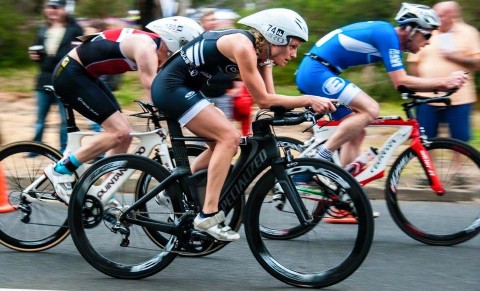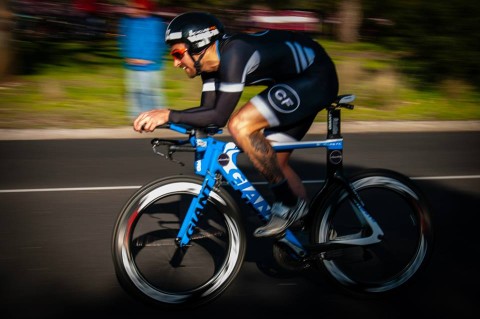The sun is shining, the magpies are swooping and the blossoms are blooming – this can only mean one thing: spring is in the air and it’s time to dust off the bike and get out for some well needed fresh air! For many of us, winter sees the road bike being packed away in a corner or perhaps locked into a wind trainer. With summer around the corner it’s easy to want to jump straight back into an exercise program but before you do there are a few things to consider, particularly when it comes to proper bike positioning.
With the increase in recreational riders getting back on their bikes, there appears to be a coincidental increase in cycling related injuries presenting at Melbourne Osteopathy Sports Injury Centre. And we are not talking about broken bones or grazed bodies – we are talking about repetitive overload issues from suboptimal bike set up. As a cyclist myself, I frequently hear my team mates complain of knee pain, back pain, hip pain, and neck pain from a poor bike setup and too many kilometres in the wrong position.
With increasing online sales and web pages dedicated to DIY bike fits, it appears that many people are not prepared to spend the time (or money) required for a proper bike set-up. I can personally say from experience that when you do have a proper bike fit completed, you will be amazed at how much discomfort you had simply gotten used to putting up with.
A comfortable and efficient riding position is vital. It is important that your bike is properly set-up and adjusted. If your bike is adjusted to suit your particular body size and shape you will then feel more relaxed and will be able to ride longer distances with less effort. I recently had my new Triathlon Bike set up by Simon at Total Rush in Richmond and I can not speak highly enough about the Specialized Body Geometry System used to set up my new bike. Simon’s attention to detail and ability to tweak things I never thought possible blew my mind. I was so impressed that I paid Simon another visit this week to ask him a few questions about bike fitting:
1. Why is bike fit so important (besides injury prevention) and what are its biggest benefits?
This is a great question – through proper bike fit we can make people comfortable and fast. If you’re not comfortable you won’t be fast! I would still say that 60-70 % of cyclists have poor bike FIT and we can improve their performance by 20%. Every person that brought a Triathlon bike off us before IronMan Melbourne achieved a PB in the race and most of these results had nothing to do with their old bike but the fit they had on their new bike.
2. In your experience what is the most common complaint from those seeking a bike fit?
In my experience, a sore back or knees are the major physical complaints – especially when doing longer rides or hill repeats. Of course we also get people who simply want to go faster.
3. Can all types of cyclist (commuter, recreational, track cyclist, MTB or triathlon) benefit from bike fit? And does it matter at what point in the training/race season it is performed?
All cyclists will benefit from Body Geometry/GURU FIT and it’s best to do this at the start of the season. Having said that, I’ve done fits on cyclists mid-season, made big changes and seen big benefits with no detriment to their physical state. If someone is doing 500km per week and we make a big change it will take a while to adapt, hence the ideal time is the start of the season. Most people will be able to adjust to the changes within 3-4 wks. Earlier this year I fitted a guy that bought an S-WORKS SHIV off us 3 days before IronMan Melbourne – he’d never ridden a Triathlon bike before and managed to beat his previous year’s time by half and hour.
4. Other than the tweaking of angles and heights on the bike itself, do you have any other ways to improve cycling set up?
Body Geometry footbeds (shoe inserts) are the single best way to get a lot more power and comfort. We constantly see improvements of between 7-15 watts in power after fitting these to customers shoes – you can’t get that performance from buying bike components. Aero helmets are another important piece of the puzzle, they help create less drag, therefore you slip through the air quicker.
5. How does the Body Geometry process differ from other bike set ups?
Body Geometry FIT differs in that the fitter is trained how to fit without computers. We spend time learning how the human body functions best on a bike and how to solve challenges that everyone has on a bike individually. We do NOT use a computer to analyse the body or measure it then use algorithms to do the FIT. It’s a very custom fit and requires the fitter to have a great deal of experience. Like all things, there are a range of Body Geometry fitters from those that have simply completed their training course to someone like me who has performed thousands and achieved great success… 96% of our customers give us a 9 out of 10 for Body Geometry FIT.
6. How often should you review your bike set up?
I tend to recommend every 2 years.
7. Any other pearls of wisdom for cyclists out there?
Other than FIT, having you bike regularly serviced, especially before a race, is so important. The number of people I see attending events with a poorly serviced bike, only to then suffer an easily preventable mechanical issue in the race, is huge. Spending months training to simply have your bike fail because you didn’t want to spend $150 at the bike shop for a service is just silly. A good bike needs to be serviced at least 4 times per year plus another 4 bike spas – this way your mechanic will be able to keep your bike in tip top condition.
The degrees on the wall at Total Rush speak for themselves – Simon and his team are very experienced bike fitters and I recommend them highly. Thanks to Simon and the team at Total Rush for your support.
If you would like to speak to our other practitioners about your cycling position or bike fit, please feel free to ask a question, contact us or email us at: info@



